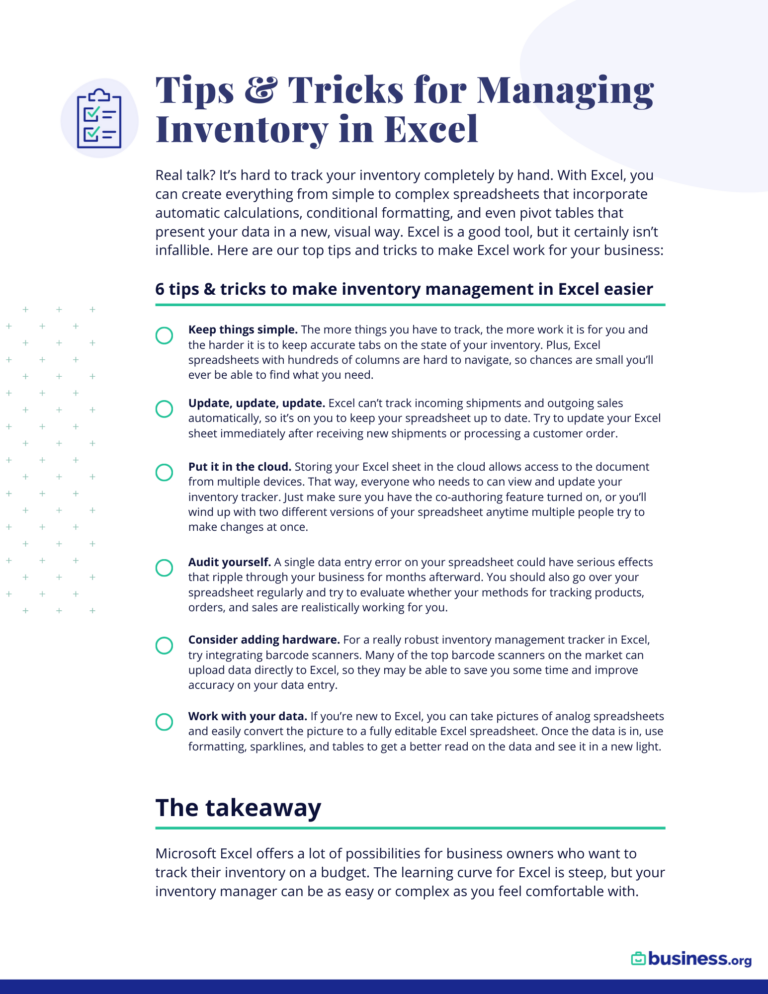We are committed to sharing unbiased reviews. Some of the links on our site are from our partners who compensate us. Read our editorial guidelines and advertising disclosure.
What Is Safety Stock?
Inventory management is one of the biggest challenges facing today’s small-business owners. From ever-changing consumer demands to supplier delays and outages, there are countless factors that can make it difficult to determine reorder points and standard deviation of demand.
Fortunately, safety stock can help mitigate these inventory management challenges, as well as prevent stockouts. Check out our guide to learn more about the benefits (and a few risks) of safety stock, as well as how to calculate safety stock levels for your small business.
Table of contents
What are the benefits of safety stock?
Small-business owners might choose to have safety stock on hand for a variety of reasons. In any case, safety stock is meant to combat uncertainty related to demand, lead times, and forecasting.
Here are a few of the many benefits of safety stock:
Reduce the chances of stockouts
Stockouts have a host of negative implications for small-business owners, leading to a loss of sales, decreased customer satisfaction, increased operational costs, and more. Having safety stock can help business owners avoid running out of stock even when unexpected events occur.
Buffer against demand uncertainty
Consumer demand can rise and fall depending on the season, current events, and shopping trends. And while it can be difficult for small-business owners to predict consumer demand, safety stock can give companies extra time to replenish stock when demand spikes.
Avoid risks of supply chain disruptions
Supplier disruptions might occur because of material shortages, natural disasters, operational issues, and many other reasons. These disruptions can have a negative impact on small-business owners seeking to restock products—but safety stock can help minimize these effects.
Increase customer satisfaction
In today’s highly competitive business environment, it’s essential for small-business owners to prioritize customer satisfaction. Having safety stock on hand helps to ensure happy, loyal customers who are confident they can always turn to their favorite brands to find what they’re looking for.
Improve efficiency
Safety stock makes it easier to operate a small business smoothly and efficiently. Customers can purchase the products they love, suppliers aren’t rushed, and employees aren’t overworked. Safety stock can also decrease the expenses related to rush shipping, urgent reorders, and forecast inaccuracies.
By signing up I agree to the Terms of Use and Privacy Policy.
Drawbacks of safety stock
Despite the many benefits of safety stock, this inventory management strategy comes with a few challenges small-business owners should be aware of too.
Here are a few concerns business owners should consider before ordering safety stock:
- Excess safety stock. If a company orders too much safety stock, it could end up as obsolete stock that is difficult to get rid of.
- Limited cash flow. Investing in safety stock requires cash—meaning small-business owners may not have as much money to put toward new products of cycle stock.
- Increased storage costs. There’s no way around it: Keeping stock on hand costs money. Business owners will need to consider the cost of storage and warehouse staffing before purchasing safety stock.
How to calculate safety stock
Determining the right amount of safety stock is certainly an art form. Small-business owners can gauge the optimal amount of safety stock over time, depending on current consumer demand, lead times, and other factors.
Here is a baseline formula for calculating an average amount of safety stock, but just remember that it’s not a one-size-fits-all equation.
Safety stock = (max. number of units sold in a day ✖ max. lead time in days) − (average number of units sold in a day ✖ average lead time in days)

Ordoro offers everything you need to sell your products online or in person.
- Get total control over your inventory
- Align your business strategy with your stock management
- Maintain vendor and customer relationships
The takeaway
Safety stock gives small-business owners peace of mind, even when they are faced with challenges like sudden changes in consumer demand or supplier delays. When carefully calculated, safety stock is one of the most effective ways to avoid stockouts and keep customers satisfied. However, it’s important for business owners to consider the challenges and risks associated with safety stock before ordering extra inventory.
Would you like to learn more about safety stock and other types of small-business inventory? Check out Business.org for The Ultimate Guide to Small-Business Inventory Management.
Related reading
Safety stock FAQ
Also known as buffer stock, safety stock refers to the extra inventory small-business owners may choose to store in order to avoid running out of stock. Business owners who store safety stock are better able to meet sudden, unexpected increases in demand and are less impacted by supplier delays.
Safety stock is a term used to describe the excess inventory business owners choose to keep in hand in the event of an increase in demand or supplier delay.
Safety stock is surplus inventory kept on hand to reduce the risk of running out of stock. For example, if a small-business owner typically sells 100 T-shirts per day and decides to store 5 days of safety stock, they would need to have 500 T-shirts on hand (100 products x 5 days).
Likewise, if a business owner usually sells 25 phone cases per day and wants to have 10 days worth of safety stock, they would need to have 250 phone cases stored (25 products x 10 days).
Safety stock reduces the chances of selling out of a product, but it also comes with some risks. Having too much safety stock on hand can result in higher holding costs, excess products that are difficult to sell, or limited cash flow. To avoid these challenges, business owners should carefully calculate the ideal level of safety stock.
While there are many formulas for calculating safety stock, the simplest equation is calculated by considering the number of units sold in a day and the amount of time it takes a supplier to deliver the stock.
Safety stock = (max. number of units sold in a day ✖ max. lead time in days) − (average number of units sold in a day ✖ average lead time in days)
Disclaimer
At Business.org, our research is meant to offer general product and service recommendations. We don't guarantee that our suggestions will work best for each individual or business, so consider your unique needs when choosing products and services.




